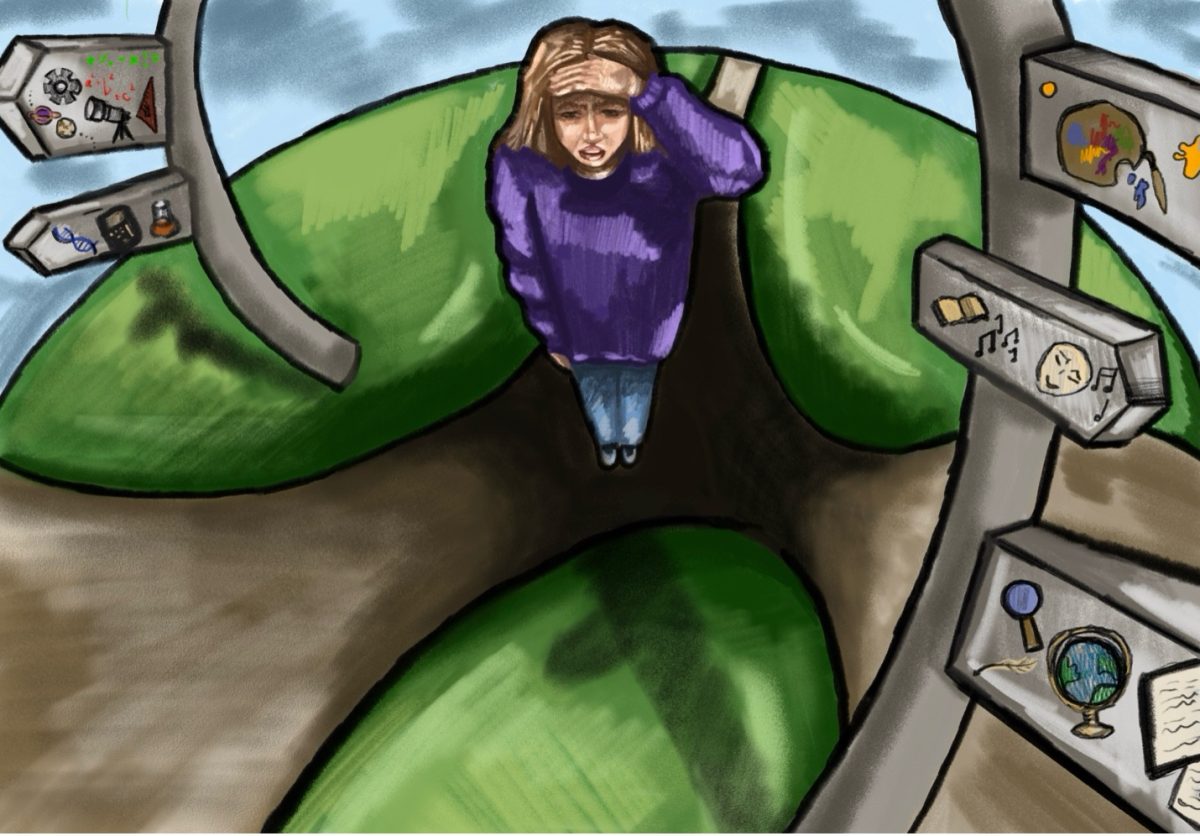The page begins with a single idea: I just want to fall asleep and never wake up again. Out of it flow other thoughts, expressed in word-picture sequences that sprawl across the page. I don’t want to find out what happens leads to My parents will age and die, My body will deteriorate, My friends will disappear. The author of these thoughts curls in her bed in a small panel off to the left, hands snarled in her hair. Above her, Isn’t there anyone who will be able to tolerate sprouts a red arrow that loops around to my disgusting, bloated body?
This woman is the unnamed protagonist of Chris Ware’s Building Stories, reviewed in the October 19 issue of the Maroon. I first discovered Ware through his work featured in the Best American Comics series and was the first person to haul his newest home from 57th Street Books on the day it came out. Ware’s pleasant melancholy has always appealed to me, and Building Stories got me right away with a heroine whose concerns were uncomfortably similar to mine: She was creative but timid; insecure about her appearance but lonely. Most strikingly, when depicted later in her middle age, she remained haunted by the period of her life in which she was both the most self-satisfied and the loneliest: the years between childhood and parenthood.
This stage has caused me great worry as I perch on the edge of it. It is a stage that seems to be increasingly lambasted in popular culture—the archetypal college graduate living in his or her parents’ basement, trying to extend childhood far beyond its limits. Shows such as HBO’s Girls portray the early twenties as a farcical mess instead of a grand emergence into the adult world. Indeed, part of the message seems to be that the adult world is never emerged into grandly, if emerged into at all.
The other part of the message seems to be that this time, more awkward than adolescence and more irretrievable than childhood, is pivotal in both senses of the word. It is pivotal in the simple sense that it is important, but it is also pivotal in the literal sense, as a hinge around which everything else must move. Ware’s heroine orbits around this time; in some ways she appears to have never left it. The reason for this became clear to me as I progressed through the stories: It was a time rife with opportunities to make choices, and she lived it paralyzed by fear. It was the time when her insecurities cost her the most.
I met Ware this past spring at the Logan Center’s incredible Comics: Philosophy and Practice event. Thoroughly intimidated by the prospect of approaching a crowd of titanic artists with no artwork of my own and nothing remotely clever to say, I shuffled over to where people were laughing and shaking hands and blandly presented a sheet of paper to be signed in turn by three of my personal heroes: Lynda Barry, Ware, and Art Spiegelman.
By the time I got to Ware I had already offered the page to Barry, who had drawn a monkey’s face circled with an arrow. “It means ‘don’t forget to monkey around,’” she told me. Ware followed suit and doodled what appeared to be a similar picture but turned out to be quite different. The face, for one, was human, and instead of beaming at me like Barry’s monkey it wrinkled its brow sorrowfully. Most tellingly, an arrow began over the forehead but then partway through seemed to lose its energy and flopped miserably to the bottom of the page.
Unlike Barry, Ware didn’t give me a moral for his drawing. Perhaps it was a warning that dissatisfaction is bound to catch up with me. But to think so pessimistically would be to forget that Ware’s creative universe is populated by good, if self-deprecating, people. More likely it was advance forgiveness for the ways in which I am bound to fail; for bumbling through the world as I am about to bumble; a sign that now is a crucial time for forgiveness, for warding off the paralysis of doubt. Now is, after all, the time when we have the most to lose.
Emma Thurber Stone is a second-year in the College.







